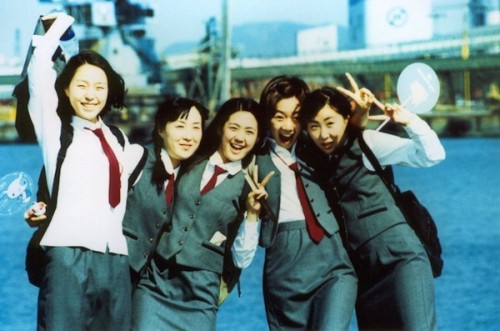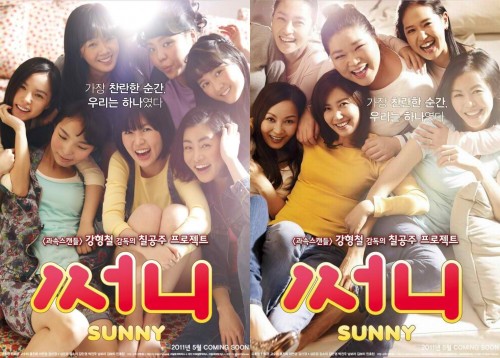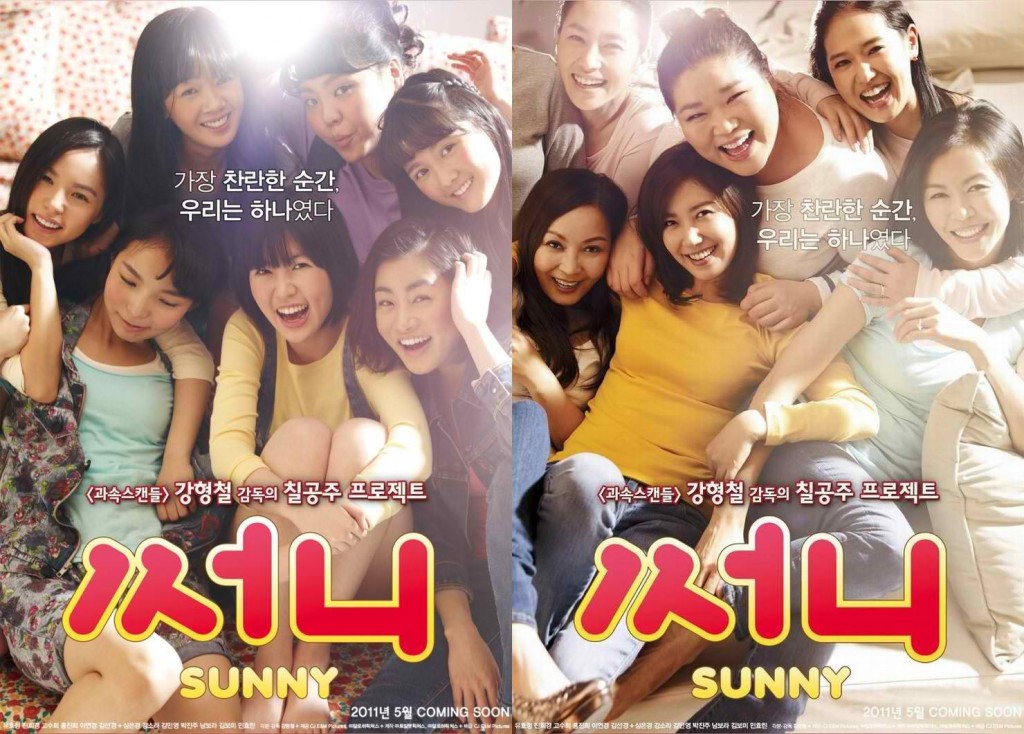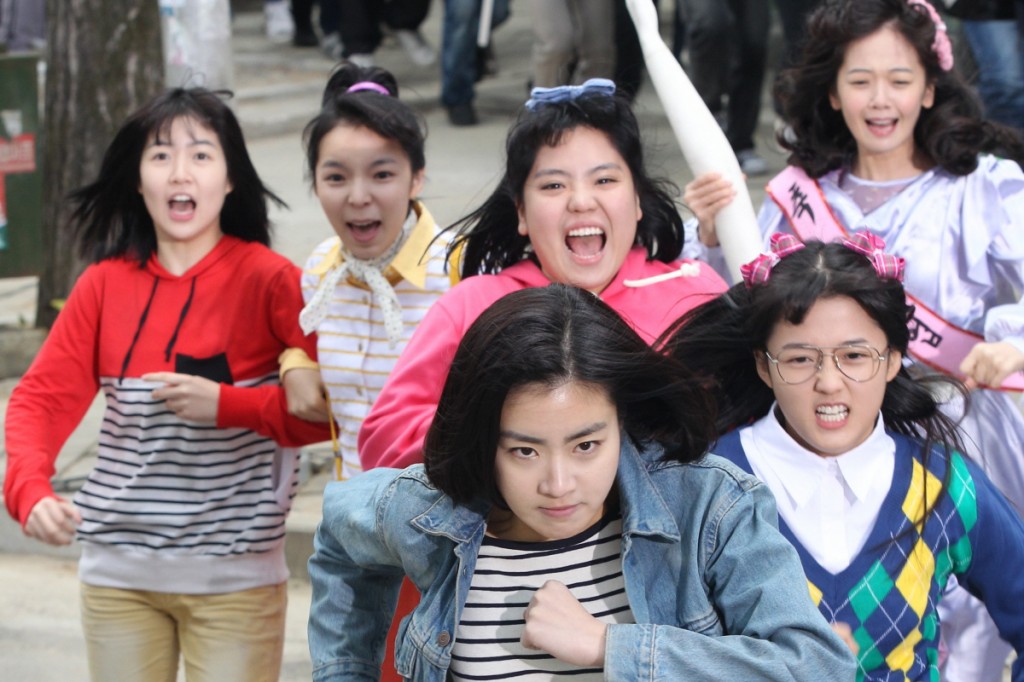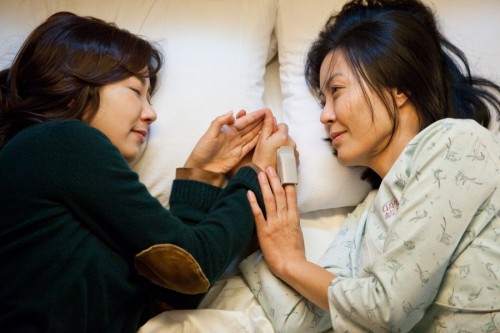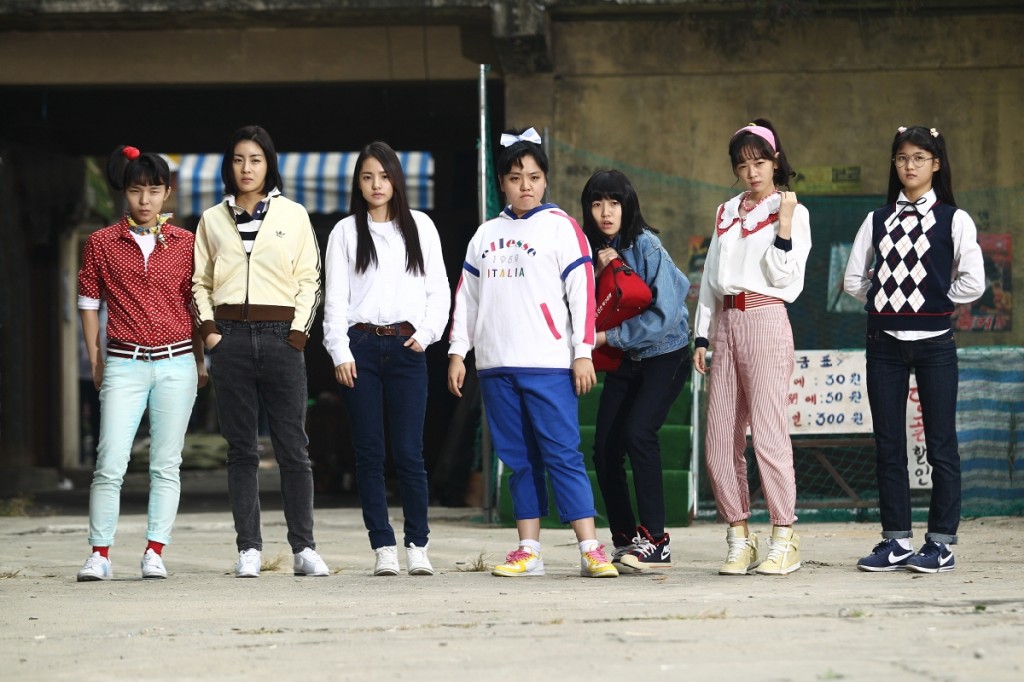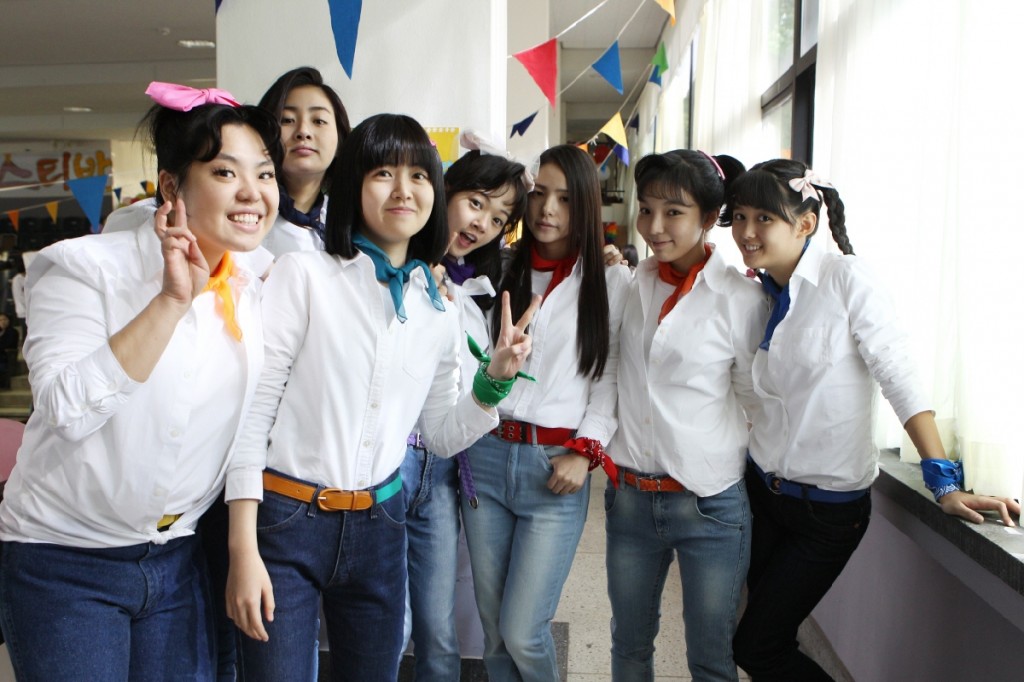This guest post by Adam Hartzell appears as part of our theme week on Female Friendship.
Before I knew about the Bechdel Test, I knew about Take Care of My Cat, the 2001 debut film by South Korean director Jeong Jae-eun that is a required text for those interested in New Korean Cinema.[i] Among the many admirable and compelling aspects of the film, I found it most compelling that it had almost nothing to do with boys.[ii] As film scholar Chi-Yun Shin put it, “These women are defined not by men but by themselves and with each other.”
The film is about the evolving friendships of five young South Korean women as they step away from their technical high school into a less certain world. Their degrees of closeness shift as they consider their futures in the face of particular restrictions in work and life opportunities due to gender and class discrimination.
Tae-hee, played by the incredible Bae Doo-na of The Host and Cloud Atlas, continues to work at her family’s sauna and is the hub of the friendship network. She does her best to keep everyone together. Hye-joo (Lee Yo-won) is the social climber, but she is not played for cliché. Her character–at risk of caricature–is provided more depth than is usual for someone of her type. Hye-joo’s closest friend in high school was Ji-young (Ok Ji-young). But Ji-young’s economic situation, living alone with her frail grandparents in a much poorer part of Incheon, results in limited employment options. She doesn’t have the money to keep up with Hye-joo’s status-seeking desires. She wants to go to art school, but her family lacks the funds to enable this pursuit. Then there are the Chinese-Korean identical twins, Bi-ryu and Ohn-jo (played respectively by the Lee sisters, Eun-shil and Eun-ju). Their characters are less developed than the others, but their presence serves as acknowledgement of South Korea’s own specific multicultural make-up, something rarely acknowledged in the film industry at this time. Another character of interest here is the poet with cerebral palsy [iii] who dictates his poetry to Tae-hee. All these characters are, in their own ways, outsiders in relation to the growing South Korean economy only recently recovering from the IMF crisis.
Along with these characters, there is the cat that is passed between them. A stray that was found by Ji-young, it is given as a present to Hye-joo. When she returns this gift, it signifies rejection of their high school friendship that may no longer hold in their adult lives. The cat finds its way into the hands of all the women and represents an attempt to communicate what is unspoken between them. Jeong has said regarding her intent with the cat, “I had hoped for the girls to be like cats – flexible, independent, complex, to have the tendency to leave if they are not happy with their owner.”
In addition, mobile phones play a vibrant part in the communication, miscommunication, and refusal to communicate between the young women. Jeong displays the text on screen alongside the characters in an early creative effort to represent texting on film, of which South Korean cinema was an early pioneer. Finally, the gorgeous soundtrack works off the bleeps and tones of cellphones in its dreamy underscoring of this liminal period in the lives of these young women.
With the exception of the twins, each woman confronts discrimination directly. Ji-young does not have family or other connections necessary for the referrals required for certain jobs. Expectations are made by a male co-worker that Hye-joo should have laser vision corrective surgery. Tae-hee must deal with her father’s continued preference to her younger brother, leading to a confrontation with her father in a restaurant that includes a Korean literary reference. [iv] Explaining how Ji-young and Tae-hee fully resolve these forms of structural discrimination would result in my having to reveal plot points that I don’t want to reveal here. Let me just say that Tae-hee finds a connection with the temporary migrants in South Korea, Filipinos and Burmese, adding yet another layer to the feelings of isolation and exclusion these young women feel in the country of their birth.
Director Jeong Jae-eun has given us a wonderful exploration of female friendship through young women, whose position in their society is not stable. Allegiances shift as class rears a greater presence in their adult lives. As all great direction and scripts do, Jeong mostly shows rather than tells how these women connect and how they fail to connect. Early on in the historical prevalence of mobile technologies, Jeong demonstrates the myth in the promotional hype that such tools will keep us closer. She shows how they also keep us apart in how the tools are used and how class barriers limit access to such tools. Although it didn’t do spectacularly at the box office, Take Care of My Cat so touched its intended audience that it inspired an uprising of support to bring it back to theatres after being pulled sooner than fans wanted.
When New Korean Cinema emerged on the international film scene, part of what made it unique as a national film movement was the significant presence of not one, but three women directors. Along with Jeong, there was Lim Soon-rye and Byun Young-joo. Lim’s first two films were, interestingly, about male friendship (Three Friends and Waikiki Brothers). Lim would go on to direct a 2008 film partially about female friendship, a film based on a real-life South Korean women’s Olympic team handball squad called Forever the Moment. I think I can go on record and say it’s the greatest team handball film ever made. [v] Sports films in South Korea do not tend to do well, so it is a tremendous achievement that Lim garnered box office success for that film. Byun is most famous for her trilogy of documentaries on “Comfort Women,” which involve her friendship with women survivors and their own friendships with each other. Although Ardor and Flying Boys are less appreciated works, I am actually a fan of those feature films by Byun. Her most recent film, Helpless, actually garnered a best director from the industry. Back to Jeong–she moved on from Take Care of My Cat to a film partially about male friendship (The Aggressives). That film did not perform well at the box office and we had to wait seven years before Jeong took the director helm again, this time with critically well-received documentaries about architecture.
The reason I mention this women triumvirate of New Korean Cinema, besides pointing out how they all have directed films focusing on female friendship, is that in spite of their solid work and that of the women directors who joined them later, such as Park Chan-ok, Bang Eun-jin, and Gina Kim, I find myself discouraged that Jeong and other quality films by women directors, such as Kim’s excellent Invisible Light from 2003, often don’t make it on lists of significant films of the New Korean Cinema movement. Such lists are often dominated by the opposite of friendship, the male violence of films like Old Boy and I Saw The Devil.
Case in point: recently Indiewire, which on all other levels is a strong advocate of women’s films and focuses considerable coverage to pointing out gender discrimination in the U.S. film industry, posted a “primer” this summer on what they mislabeled as the “Korean New Wave.” (See the first endnote.) In that primer they completely dismiss the impact of women directors in South Korea. In their parenthetical excuse, they say they were only looking at films with “a measure of international distribution.” This is disingenuous since Take Care of My Cat received considerable international distribution for the time and Hong Sangsoo’s 2013 film Nobody’s Daughter Haewon, which made their list, has received almost next to nothing. [vi]
This erasure of women directors partly happens because we privilege the stories told by male directors, particularly those that are violent or action-oriented as Indiewire’s list of “essential” films demonstrates. Films about women’s lives where relationships are given precedence don’t fall into the male fight club preferences of many casual references to the South Korean film industry. Take Care of My Cat is a canonical text of New Korean Cinema. To leave it off your list is like leaving off Bong Joon-ho’s 2003 masterpiece Memories of Murder. Films about female friendship, the hard work of caring for others while negotiating room for independence, is just as much art, is just as engaging as, if not more than, watching a bunch of guys beat the crap out of each other. Ignoring films by the women of New Korean Cinema is part of a longer tradition of dismissing the women’s labor that makes art and entertainment possible. Take Care of My Cat’s erasure reminds us that we need to take care of our films and make sure that the exceptional works by these women aren’t forgotten or underappreciated. Such systematic forgetting makes it harder for the South Korean women working in the industry now and in the future to bring us their stories.
[i] Some writers have confused the “New Korean Cinema” and “Korean New Wave” film movements. For an example of this confusion, see Indiewire’s “10 Essential Films of the Korean New Wave” (June 26, 2014, credited to ‘The Playlist Staff’) where none of the films listed are part of the Korean New Wave but are actually part of New Korean Cinema. In the scholarly literature “Korean New Wave” denotes certain films made in the 1980s to the mid-90s that first started to address the cultural suppression and censorship at that time in South Korea’s history and were closely connected to the democracy movement. “New Korean Cinema” began in the late 1990s when censorship laws loosened and higher production quality became available. Then another confusing moniker entered the picture, “Hallyu,” which refers to the global pop culture phenomenon of South Korea films, television dramas, and pop music. The launching of the film segment of “Hallyu” began with Shiri (1999) by Kang Je-gyu. Mistakes in naming the wrong movement are primarily due to the names not being distinct enough. The fact that they both have “New” in them doesn’t help. Add to this that Hallyu means “wave” and you can see why Indiewire and others might mix up the movements and their origins. There are several books one can read to clarify this confusion, see for example Chi-Yun Shin and Julian Stringer’s New Korean Cinema (University of Edinburgh Press, 2005), Darcy Paquet’s New Korean Cinema: Breaking the Wave (Wallflower Press, 2010) and Directory of World Cinema: South Korea (ed. Colette Balmain, Intellect Ltd., 2013).
[ii] There is a young man who conveys romantic interest toward one of our characters, Hye-joo. Hye-joo brushes him off. But her romantic refusal is not “punished” or seen as her core flaw. Her friends are more upset with her general rudeness to him rather than any gender expectation that she should find the right man quickly or else she’ll regret it.
[iii] This character is played by an actor of similar embodiment, which is still rare casting for any national film industry.
[iv] The literary reference is to a novella by Cho Se-hui, the title of which goes by a few translation variations but I will use this one – A Little Ball Launched by a Dwarf. It’s a bit of a plot spoiler to mention the actual dialogue so I won’t here.
[v] If anyone knows of another team handball film, I seriously would love to know since sports films are one of my other film interests.
[vi] I am assuming by “international distribution” the authors mean what most folks intend by that phrase, distribution outside of film festivals.
Adam Hartzell has been a contributing writer to Koreanfilm.org since 2000. He has written for various websites (Fandor, sf360, VCinemaShow), the quarterly Kyoto Journal, and has a chapter in The Cinema of Japan and Korea (Wallflower Press) along with contributions in Directory of World Cinema: South Korea (Intellect Ltd). He writes often about the films of Hong Sangsoo such as for a retrospective of his work held in San Francisco and a paper delivered at the Society for Cinema and Media Studies conference in Seattle in 2014.
